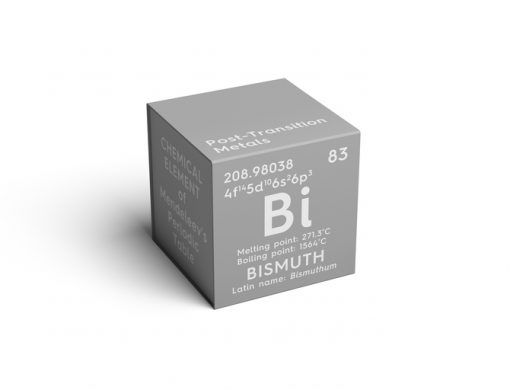Low melting alloys — also sometimes called fusible alloys — have a distinct place within the manufacturing industry. Though they are sometimes overlooked, their interesting solidification properties ensure that they hold an esteemed place in the design of components as well as tool applications.
Low Melting Alloys: An Overview
Alloys that melt at low temperatures — usually those below 300° — are generally classified as being low melting. Additionally, many of these low melting alloys also have eutectic compositions. This property provides these low melting alloys with a melting point that mimics a pure metal. Those low melting alloys that are not eutectic tend to have a range of melting temperatures. This often results in a slushy composition as the temperature wavers between their liquid and solid states.
Low Melting Alloy Bases
Bismuth is a base often found in low melting alloys. While it can be found alone, in many cases, bismuth is mixed with cadmium, antimony, lead, zinc, tin or other metals. For many applications, bismuth is preferred as a base because of its characteristic of expansion. This allows for an adjustment of the bismuth content in the low melting alloy to produce a material with the desired expansion or shrinkage properties. As a general rule, bismuth-based alloys comprised of bismuth levels between 48 and 55 percent display little change in their volume levels.
Low melting alloys with a base of gallium or indium possess characteristics that allow them to become wet and adhere to surfaces such as glass and ceramic. This property is useful for applications that require bonding and/or sealing. In this case, these low melting alloys are designed to ensure that that a melting point or temperature range is attained.
Uses for Low Melting Alloys
Many products rely on the low melting points of these alloys to ensure that their design components are met. For example, applications that require profile or tube bending, lens blocking or adhering irregular or delicate pieces are served well by using low melting alloys.
Safety plugs for boilers and other vessels under extreme temperatures are comprised of low melting alloys to prevent explosions. Materials that feature low melting alloy compositions provide an environmentally-friendly alternative to those that contain mercury. Tilt switches, thermometers and MHD inertial motion sensors are just a few instances in which low melting alloys are preferable to other compositions.
Polymer-based materials, petroleum and silicone can become liquefied at relatively low temperatures. These liquids, however, lack the thermal and electrical conductivity characteristics that are necessary to facilitate the transfer of a range of mediums. Low melting alloys that contain high thermal conductivity properties are vital in the production of devices that effectively manage thermal applications. Some examples include heat transfer systems, constant-temperature heat treating baths and thermal interfaces.
Low melting alloys also support manufacturing applications. Cores, molds and dies for components in potting, pattern casting, electroforming and encapsulation benefit from the ability of these alloys to melt at relatively lower temperatures.
Since 1896, Belmont Metals has been providing a variety of metals and alloys to address diverse applications. Within their state-of-the-art facility, Belmont Metals develops low melting alloys for their customers. Contact them for more information about their processes and services.

